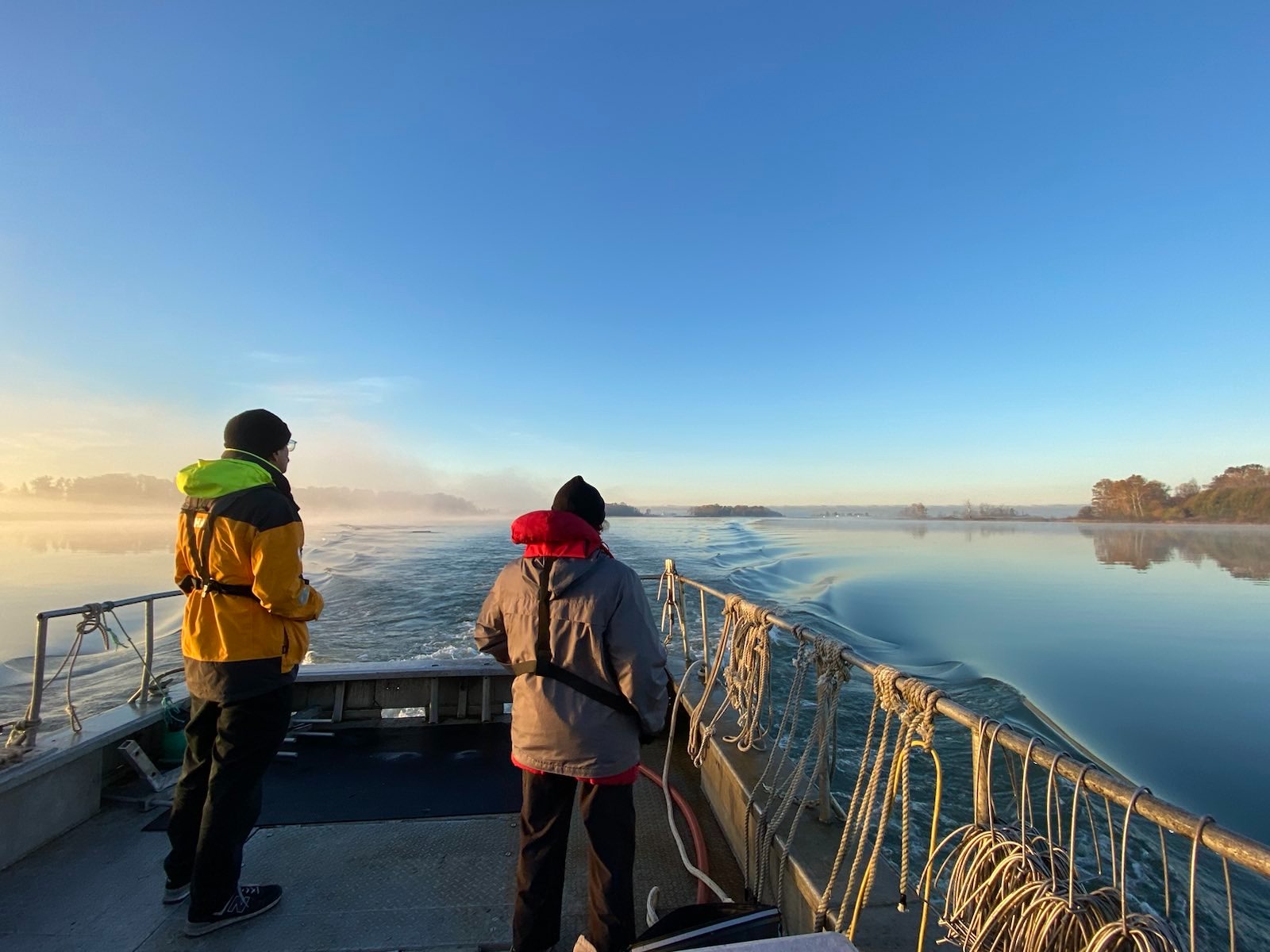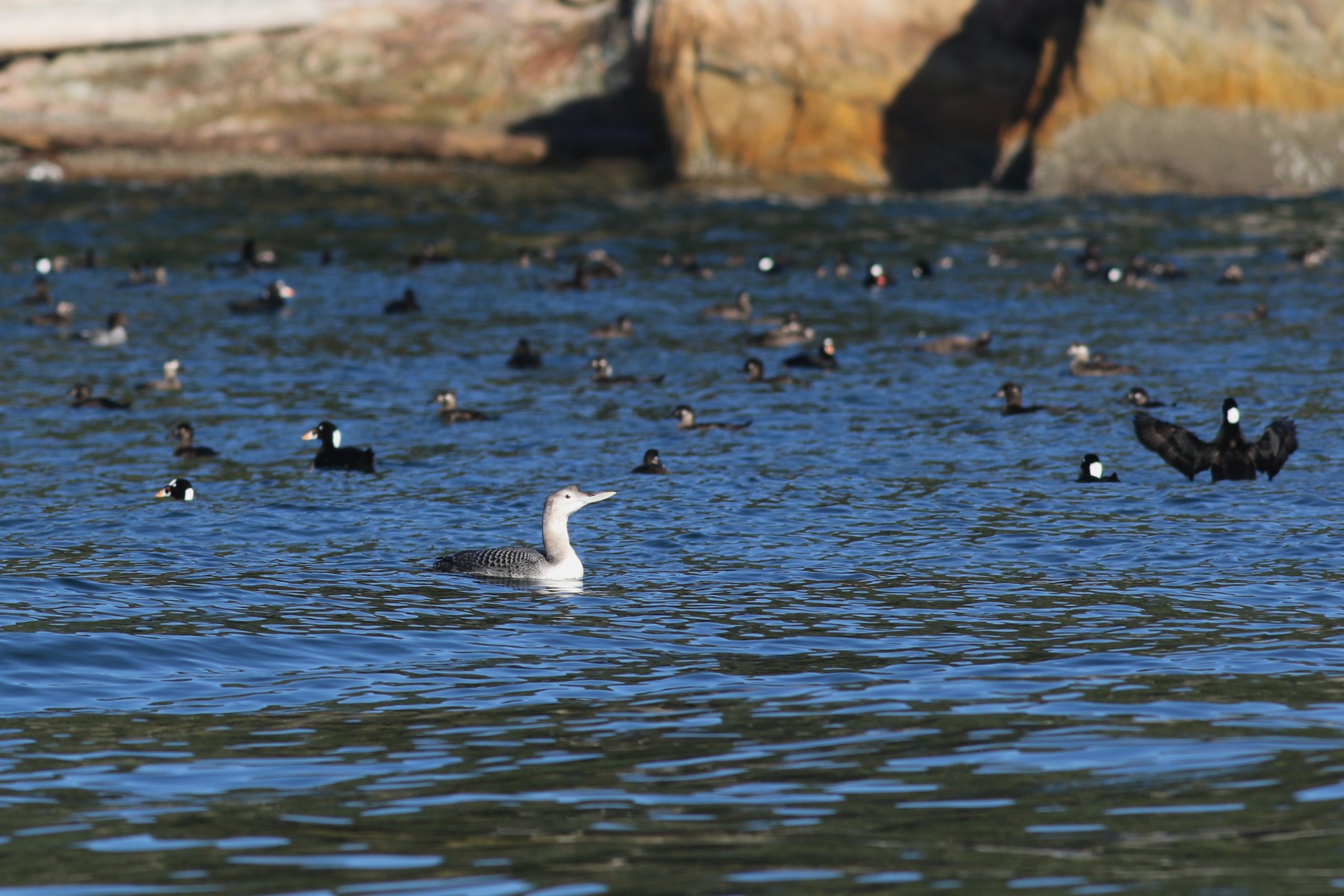Rémi Torrenta (BC Projects Coordinator), Molly Bradford (Key Biodiversity Areas Technician)
In the Metro Vancouver region, we are lucky to have two very special Key Biodiversity Areas (KBA), the Burrard Inlet & Howe Sound which is located immediately north of Vancouver, and the Fraser River Estuary immediately south of Vancouver. Birding in these areas during the nonbreeding season is an amazing experience because of the incredible abundance and diversity of birds that rely on them.
These sites also contain some of the most important stopover locations along the Pacific Flyway used by many species during spring and fall migrations. In addition to its importance for birds, the Fraser River Estuary is recognized as a KBA for the nationally significant populations of Streambank Lupine and Audouin’s Night-stalking Tiger Beetle found here.
In winter months, the ocean-moderated climate makes the Metro Vancouver region suitable for many waterbird species that breed farther north in the boreal or Arctic regions like Dunlin and other shorebirds, or sea ducks and grebes in the interior of British Columbia. This region also contains a complex mix of ecosystems used by birds and other wildlife including; extremely productive estuarine waters, unique glass sponge reefs, intertidal mudflats, rocky shorelines and islands, coastal marshes, man-made beaches, farmland, and rainforests.

Boat-based survey of the Fraser River Estuary KBA photo: Yousif Attia
We are very fortunate to have these sites and birds, but we are also very fortunate and grateful to have an outstanding number of volunteers who respond to our call every fall to help monitor these KBAs. In 2023 we had record volunteer engagement, with 70 participants in the Fraser River Estuary KBA Bird Count (November 26-27, 2023), and 37 participants in the Burrard Inlet & Howe Sound KBA Bird Count (October 30-31, 2023 – on weekdays)! Thank you to all birders and boaters who contributed to this large collection of bird data. In total, 237 eBird checklists were submitted. Volunteer counts such as these are incredibly important as we continue to identify KBAs across Canada.
This year’s survey in Burrard Inlet & Howe Sound found two new species that meet KBA thresholds, Barrow’s Goldeneye and Glaucous-winged Gull. Being designated a KBA site means at least 1% of the national or global population of a species aggregates during a part of their life cycle, such as migration or breeding. Two rare, or unusual species, the Yellow-billed Loon, and Pomarine Jaeger were also detected much to the delight of the participants.

Yellow-billed Loon and Surf Scoters photo: Yousif Attia
In the Fraser River Estuary, the count turned up seven species that met a KBA threshold including Dunlin, American Wigeon, and Brandt’s Cormorant. Additionally, our volunteers detected a very high count of Green-winged Teals, and six rare, or unusual species including Whimbrel and Pine Grosbeak, were found.
Beyond identifying KBAs, regular monitoring of bird populations in these sites is critical to safeguarding these areas and helps us to: estimate population size, better understand habitat use by species or the threats they are facing, identify species that no longer meet KBA thresholds, and new ones that do, detect rare species or vagrants, raise awareness about the importance of these areas, strengthen relationships within the local birding community, and promote Citizen Science by engaging Indigenous and under-represented communities.
To read the 2023 Report and for more information, please visit the Fraser River Estuary KBA page.
To learn more about how to participate in KBA Counts, please contact Rémi Torrenta (rtorrenta@birdscanada.org). For more information about KBAs visit the KBA Canada website or contact Amanda Bichel (abichel@birdscanada.org).
Together, Birds Canada, Wildlife Conservation Society Canada, and NatureServe Canada are leading one of the first national KBA programs in the world.
